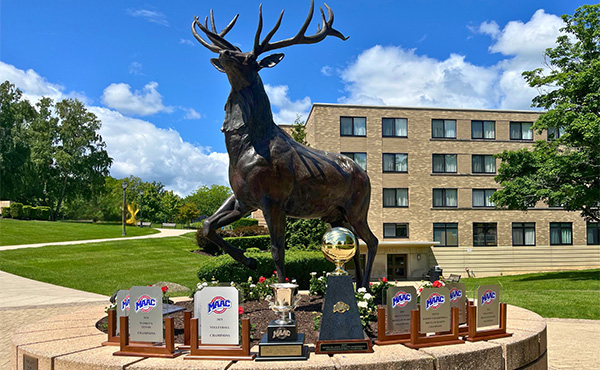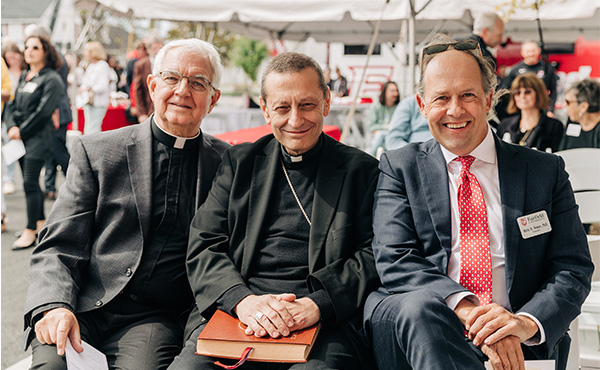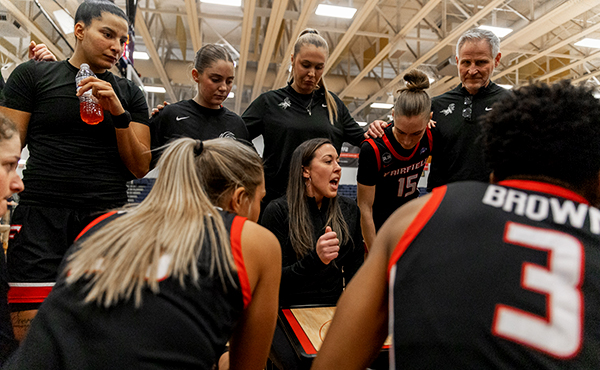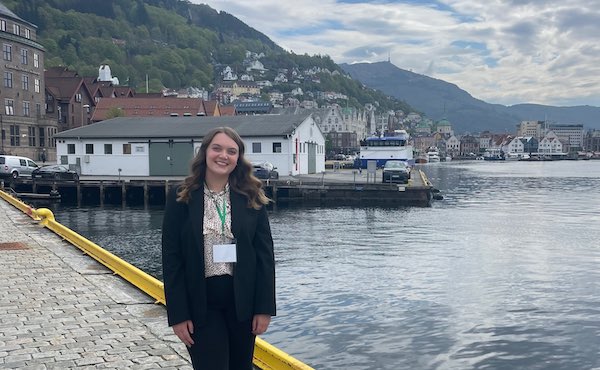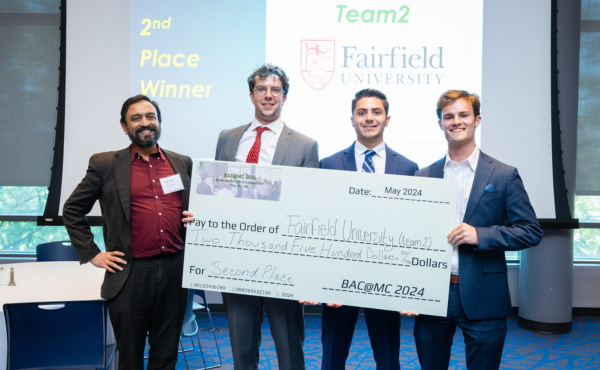The College of Arts and Sciences has revolutionized classroom learning with the introduction of a new virtual reality lab and an immersive simulation app.
My hope is to give film, television, and media students the chance to explore, use, and even help develop this new medium as a potential pathway to connect with people in novel ways.
— Patrick Brooks, assistant professor of visual and performing arts
Fairfield University’s College of Arts and Sciences is taking 21st century education into the future by offering two new and immersive virtual reality (VR) initiatives expected to enhance and transform students’ classroom experiences.
In recent weeks, the University’s Xavier Hall has become home to an innovative virtual reality lab, where visual and performing arts students have the opportunity to familiarize themselves with the emerging medium and better understand its possibilities and limitations. The fully immersive and interactive space, which was both conceived and constructed by visual and performing arts assistant professor Patrick Brooks, offers endless possibilities for students working in film, television, and media to connect with their audiences in new and creative ways.
“Virtual Reality is still a very new and experimental sector in the entertainment industry and represents a thrilling opportunity to tell stories in ways that they have not been told before,” Brooks explained. “My hope is to give film, television, and media students the chance to explore, use, and even help develop this new medium as a potential pathway to connect with people in novel ways.”
Brooks is one of the University’s first professors to incorporate this new technology into the classroom. In his “Science Fiction Drama: Virtual Reality” course, students have been studying films that feature futuristic depictions of virtual reality such as The Matrix and Ready Player One, in addition to playing VR games and watching VR films as a way to explore what it means to interact or exist in a virtual environment. At the end of the semester, students will also be given the opportunity to either make or envision their own virtual reality experience.
Although VR has been a popular concept for decades, it is still in a fairly experimental stage for narrative and documentary filmmakers, giving Fairfield students a competitive edge and the opportunity to get in on the ground floor of this new medium. The popularity of the lab at Fairfield is evident, as it has become one of the most popular and regularly used spaces in the Media Center since its opening.
But Xavier Hall isn’t the only facility incorporating this new technology on Fairfield’s campus. The DiMenna Nyselius Library has recently acquired the new Rome Reborn virtual reality app, which allows classical studies and art history students to experience ancient Rome as it appeared in antiquity. The simulation app represents Rome from 700 BCE to 500 CE and offers a bird’s eye view of the ancient city, as well as highly detailed features for some of the famous landmark buildings. Not only can students see the physical urban center, but they can see it in vivid color.
“This virtual reality experience is a game changer in that it will allow students to imagine a place that is no longer visible in modern Rome,” explained Katherine Schwab, PhD, professor of visual and performing arts. “I hope that our students will deepen their learning experience as a result of this new technology.”
Dr. Schwab explains that there is a big difference between looking at a piece of artwork on a PowerPoint slide and being able to put on a pair of VR goggles and walk around it, examining each aspect of the artwork up close. As the University discovers new opportunities in virtual and augmented reality, she believes that this technology will become a crucial and transformative component of the University’s curriculum. “Not only do we want our students to have familiarity with these digital tools, but they may end up using them in their careers in ways we can only imagine right now.”
The University’s hope for these new virtual reality-learning experiences is to foster interdisciplinary efforts with other departments that aid in visualization and make students’ learning experiences more interactive.
“We are absolutely interested in finding new users and uses for this technology,” Brooks explained. “In the coming months, we look forward to offering interactive events and demonstrations so that more faculty and students can get excited about this powerful new tool and its presence at Fairfield.”

